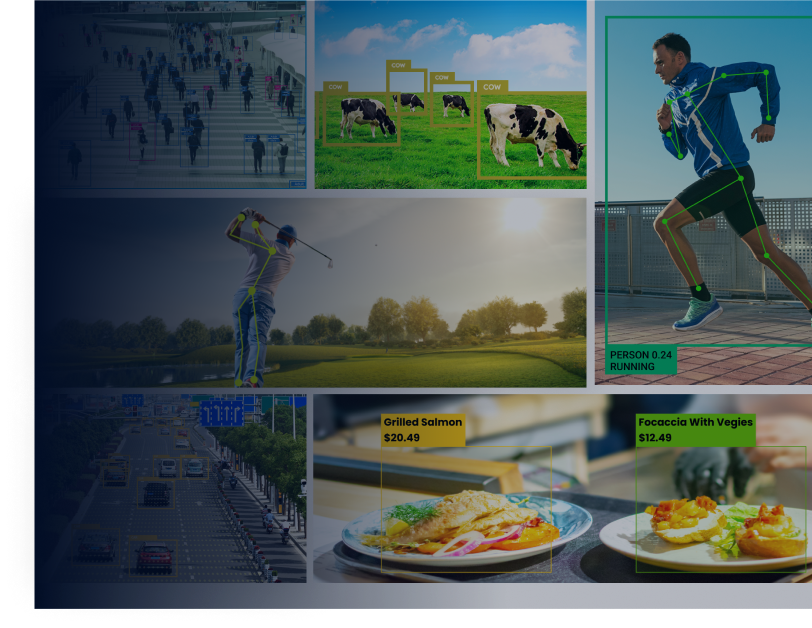ChatGPT is an OpenAI language model that generates human-like text from input prompts. The latest version of ChatGPT software, GPT-4, has gained significant attention due to its impressive performance in Natural Language Processing (NLP).
GPT-4 has ten times more parameters than GPT-3.5, which means it is trained with much more text and code. It can understand difficult questions and language nuances more easily.
The Latest iteration, ChatGPT-4o, was also released in May 2024 and showed immense significance with its multimodal capabilities. It can take information in the form of audio, images, and videos in real-time. It remembers the conversation, just like your best friend.
It gives a response as quick as 232 milliseconds for audio inputs. Also, ChatGPT-4o has the human perspective of presenting information; users don’t feel like talking to a robot but some human expert.
When comparing Chat GPT 4 vs. 3.5, you’ll find that the two versions differ in many ways. These include finding information and checking facts, making it a more dependable source.
Keep reading this blog to explore ChatGPT’s progress, which includes information synthesis, complex problem-solving, and a difference between ChatGPT versions .
Introduction to ChatGPT 3.5
ChatGPT 3.5 is a robust language processor recognized for its ability to produce authentic text across diverse prompts and inquiries.
It’s versatile in understanding and answering like a real person when you talk to it. It comprehends tricky sentences, knows what’s going on, and replies in a natural way. This makes it perfect for chatting, telling stories, and creative writing.
ChatGPT-3.5 was trained on a vast collection of text and code. It can turn plain English explanations into bits of code, which is useful for programmers and developers.
However, It’s important to remember that ChatGPT 3.5 is still under development and has limitations. It wouldn’t be wrong to say that soon, it will be replaced completely by GPT-4.
How Can You Use ChatGPT-3.5 vs. 4 vs. 4o?
Both versions are available for anyone to use. You can access it through the ChatGPT platform on the OpenAI website. However, it’s important to note that GPT-4 is slightly less accessible than GPT-3.5, but for a good reason.
The reason is that GPT-3.5 is free, and we can say that it is due to its limited information. Anyone can use it by just creating an account or requesting access.
Meanwhile, GPT-4 comes with a subscription fee of $20 per month. It offers benefits such as better accuracy, no busy servers, more diverse prompts, and improved performance overall.
Where ChatGPT-4O versions are also only accessible to ChatGPT Plus subscribers, this variant of GPT-4 is designed to be faster and more cost-efficient. It shares the high-quality performance of GPT-4 but has been optimized for faster response times, making it ideal for high-demand scenarios.
Chat GPT 3.5 vs. 4 are used for a variety of purposes in industries that include customer service chatbots, virtual assistants, and language translation tools; here is a short table comparing the two versions:
| Features | Chat GPT 3.5 | Chat GPT 4 | GPT-4-turbo (4o) |
| Cost | Free | $20/month subscription | $20/month subscription |
| Speed | Fast | Moderate | Faster than GPT-4 |
| Accuracy | Moderate | High | High |
| Best For | General Purpose Tasks | Advanced, complex tasks | High-demand, real-time tasks |
| Key Advantage | Free, accessible | Improved detail and nuance | Faster, optimized performance |
What’s New in ChatGPT 4?
Comparing ChatGPT 3.5 vs. Chat GPT 4, we can see a huge difference in their capabilities. GPT-4 is an advanced version and creates content from video, voice input, videos, and any other non-textual data.
Some of the new and upgraded features that GPT-4 offers include:
- Processes and responds to speech, voice, and textual inputs, including research papers.
- Enhances interactive and accessible content, widening user engagement with technology.
- Analyzes images to generate descriptive text; understands spoken language for relevant responses.
- Vast knowledge base applicable across diverse industries such as ecommerce, healthcare, and legal.
- Deep contextual understanding for generating precise, industry-specific content.
- Creates engaging product descriptions, insightful medical advice, and thorough legal analyses.
- Capable of full-stack coding, automating complex tasks, aiding in debugging, and application development.
- Generates high-quality content for a variety of business needs across multiple industries.
To see the difference in more depth, let’s see how both these versions perceive information. I will give ChatGPT-3 and ChatGPT-4 the same prompt to see how both these versions will generate images.
Prompt: “Depict frustrated and weary passengers in an airport terminal due to a delayed flight. Some are seated, tired, while others pace and check their phones, anxiously eyeing a ‘Delayed’ board. In the background, a ground crew efficiently handles a quick turnaround—refueling, loading luggage, and maintenance—highlighting the contrast between passenger inconvenience and proactive responses.”
ChatGPT–3.5
ChatGPT-4
The ChatGPT-4 tries to be more realistic and shows the real reflection of flight delays.
To truly understand the difference between both versions of ChatGPT-3.5 vs. ChatGPT 4 , one must experience it firsthand. As someone on Reddit aptly pointed out, it’s the best way to grasp the contrast.
What Makes ChatGPT 4 Different From ChatGPT 3.5?
Comparing the two versions, ChatGPT 3.5 vs. ChatGPT 4, there is no doubt that GPT-4 has more to offer in the context of content. It provides philosophers with unique ideas and can write research papers for them due to its larger training corpus. Some other differences include the following:
Overview of Capabilities
GPT-3.5 is a powerful text-based tool with certain limitations when retaining information and its capabilities. This version’s set of skills is not as advanced as those of GPT-4, which is multi-modal and designed to perform numerous tasks because of its larger capacity.
Parameter Differences
The major difference between GPT-3.5 and GPT-4 is the number of parameters. GPT-4 has one trillion parameters, while GPT-3.5 has 175 billion, making GPT-4 much more powerful.
Enhanced Problem-Solving Skills
GPT-4 takes a step ahead of GPT-3.5 when it comes to solving complex problems. It excels in tasks that involve logic, reasoning, or math. For example, GPT-4 can achieve high scores on challenging tests like the Bar Exam, even reaching the 90th percentile! It can also surpass the 88th percentile on LSATs. This level of competence is a significant improvement compared to earlier versions.
Improved Information Accuracy
GPT-4 stands out as a reliable informational partner and gives detailed answers to complex questions. It recognizes the information sources while generating text, an area where GPT-3.5 struggles. This ability improves answer accuracy and prevents plagiarism, making its features more accurate and dependable.
Scalability and Versatility
GPT-4 offers more scalability and versatility; it’s great for corporate projects and caters to a large number of users. It comes with a subscription fee of $20, which is not much considering its advanced capabilities and the suitability it offers for professional use.
Training Corpus Size and Effectiveness
GPT-4 benefits from a larger training corpus than GPT-3.5, enhancing its performance in natural language tasks like question-answering and summarization. This extensive training enables GPT-4 to understand and generate text with higher relevance and context sensitivity.
Cost and Accessibility for Users
The introduction of a subscription fee for GPT-4 highlights its advanced features and professional application suitability. This move reflects the balance between cost and accessibility, aiming to provide value for users while managing the resources required to support such an advanced model.
ChatGPT 3.5 vs. 4: Is ChatGPT Plus Worth Its Subscription Fee?
The decision of whether the subscription fee is worth it or not depends on your specific needs. People who use NLP tools for work or personal projects can invest in GPT-4 for better performance.
GPT-3.5 is best for all simple extracurricular activities and fun projects. Some individuals use it for casual conversations or fun activities, and it does not require any specific prompts.
However, ChatGPT 4 vs. ChatGPT 3.5 offers accuracy and diverse prompts that save businesses time and revamp productivity. The subscription fee may be worthwhile for organizations needing reliable and efficient language processing.
Both these versions have their own unique performance and features depending on the context of the purpose for which the consumer wants to use GPT 4 or 3.5.
ChatGPT 4 and the Future of LLMs
GPT-4 represents an achievement in Large Language Models (LLMs), and with a wider scope, it has proven to be the best for improved context retention. The broader capabilities of GPT-4 promise a better future in LLM technology. In fact, it’s possible that GPT-4 might bridge the gap between human communication and artificial intelligence, providing more natural and context-aware interactions.
Furthermore, LLMs are expected to indulge in diverse business domains, from customer support and content generation to data analysis and problem-solving. LLMs like ChatGPT API Integration services contribute positively to the future of technology and communication by striking the right balance between innovation and ethical use.
Conclusion
As we explore the possibilities and face the challenges brought by OpenAI’s ChatGPT, it’s clear that GPT-4 is more than just a landmark in AI progress. This GPT version is a crucial step for a future where human intelligence works side by side with AI.
With the ability of machines to generate human-like text, there are concerns about how this technology could be used for malicious purposes such as spreading misinformation or creating fake news.
To address these concerns, it’s necessary to establish ethical guidelines and regulations surrounding the use of AI, particularly in the context of natural language processing.

Dawood is a digital marketing pro and AI/ML enthusiast. His blogs on Folio3 AI are a blend of marketing and tech brilliance. Dawood’s knack for making AI engaging for users sets his content apart, offering a unique and insightful take on the dynamic intersection of marketing and cutting-edge technology.










